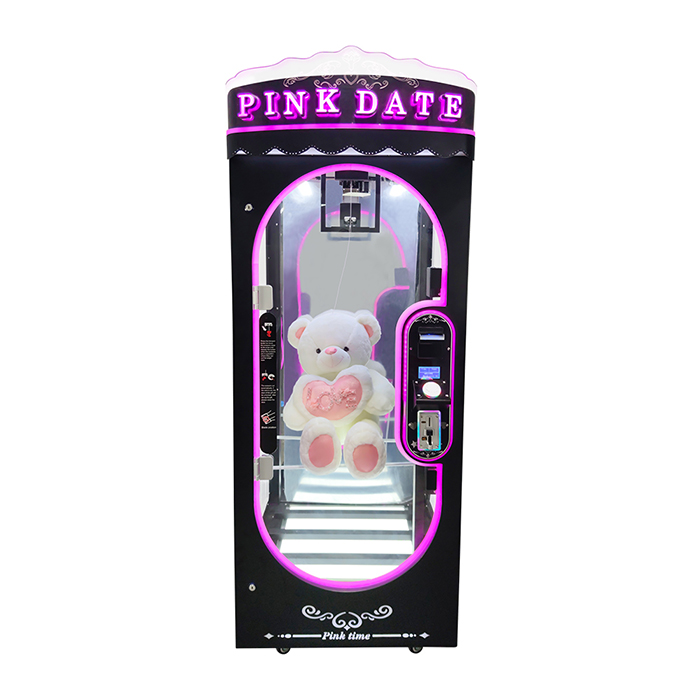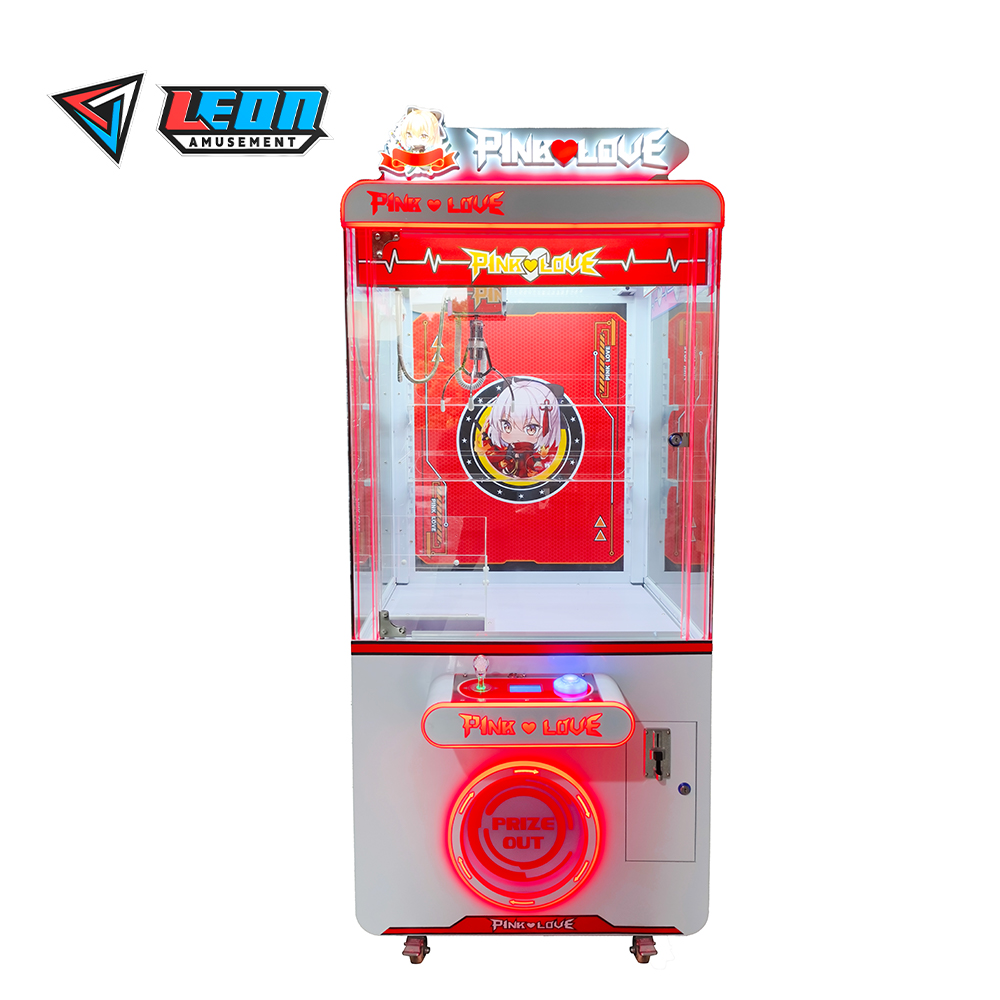The main difference between prize-cutting machines and claw machines is how they operate or their probabilities. A claw machine features a metal “claw” that players use to manually drop and pick up prizes, with an average win rate of 10%-20%, depending on the skill required to adjust power settings. Prize-cutting machines, on the other hand, require players to operate a blade controlled by them in order to cut the string that is holding up the prize with odds as low as 5%-10%. Operators make it harder by changing the speed at which the blade turns, as well as how thick The string is. Claw machines test the skill of the player and the relationship between hand-eye, while prize-cutting machines ask for good timing judgment.
Table of Contents
ToggleHow Claw Machines Work
Claw machines are arcade games of skill with one or more mechanical claws that players use to retrieve stuffed toys and other prizes from within the machine. Strength control of the claw determines how strong or flexible it can be, and this is preset mostly by the machine. Operators can adjust the minimum claw strength required to win a prize in order to make players believe each one of their attempts is close enough but ultimately fail most of the time.
The key in most of these tests is grip strength, as well as how wide open a claw points up. While there is a definite skill factor involved, claw games are typically also rigged to release the prize after so many tries. If skilled player practice, they can learn the nuances of how to manipulate better their control over the claw and use techniques that will allow them an increased success rate.

How Prize Cutting Machines Work
The rules of prize-cutting machines are much simpler than claw machines. The user (player) controls a mechanical arm or blade to fray the string, holding it so that they can win them. However, there is a carefully thought-out complexity behind the function that seems very straightforward.
Forms of self-regulated drama include prize-cutting machines, which are set up to move the blade faster or along a particular path just as it becomes likely that you’re about to win. The obstacle for the players is to press a button in the right direction where any miscue will cause disqualification by not cutting on the string. This increases the game’s difficulty and intentionally forces a few attempts. Despite the simplicity of this action, the skill ceiling is high on account of how precisely a player must time their inputs.

Differences in Success Rate and Difficulty
Claw machines and prize-cutting machines contain both a ‘near-win’ feature that leads the player to believe they are close enough to win for them to insert more coins in order to finish their game. However, the difference is that you can change difficulty settings.
Claw machines require hand-eye coordination and manipulation skills on behalf of the player. However, operators can change out the claw’s grip strength and where prizes are placed to increase or decrease success rates. Therefore, experienced players can increase the likelihood of winning if they master methods and approaches. The prize-cutting machines, meanwhile, hinge on pressing the button at exactly the right split second. The challenge is rhythm-based; it’s taught for years, practiced by many experienced players and still hard to immediately do consistently.
Differences in Prize Settings
There are also obvious distinctions in the kinds of rewards you can win between these two machines. Those are handpicked pawers that usually have smaller, lighter prices like plushes, keychains or figures. Indeed, these prizes are of lower value, but since there is a very long list of them, the majority group got what it came for. But the position and frequency of rewards can also change this ancient game altogether, with some prizes placed very far back to be cornered more than usual challenging.
With prize-cutting machines, the prizes are usually more valuable than redemption games such as mobile phones or even designer goods. However, because these winnings are higher stakes, the machines require more skill to use and (unfortunately) players do have a slight edge over less skilled slot players. Because many of the prizes are high-demand items, players always hope to win one, even though it is very unlikely.
Differences in Profit Models
Claw machines and prize-cutting machine profit models are also very different. Claw Cranes make most of their earnings from the high volume of players playing over and over to win a prize. The strength of the claw can be adjusted to make your game harder or easier, and it also makes you fail more, so they get a few extra bucks out of you. The players who manage to succeed typically require several attempts and this means the operators make a profit on all of those they did not.
High-ticket cutting machines are made more difficult to win due to their costly prizes and hence force players into more attempts before they can finally get it. Each attempt also costs more, and the way that the machine has been designed is so that competitors recoup their own outlays or actually make a profit before prizes are won. Therefore, prize-cutting equipment can lower success rates and increase the cost of playing to make profits.








